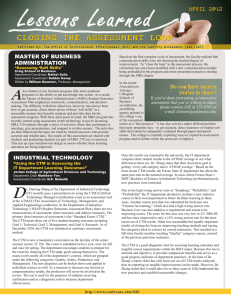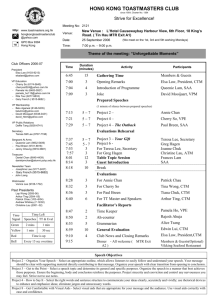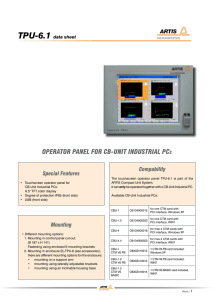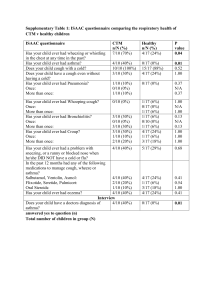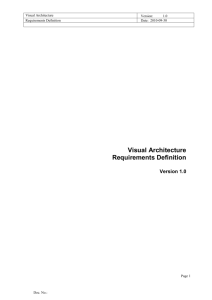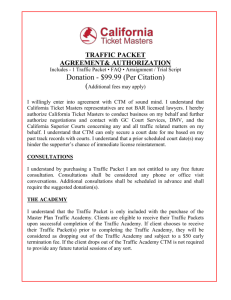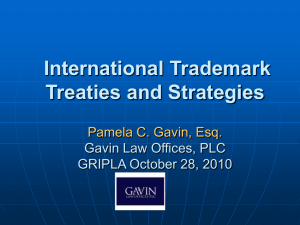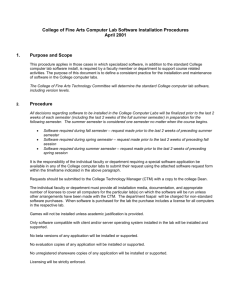file - BioMed Central
advertisement
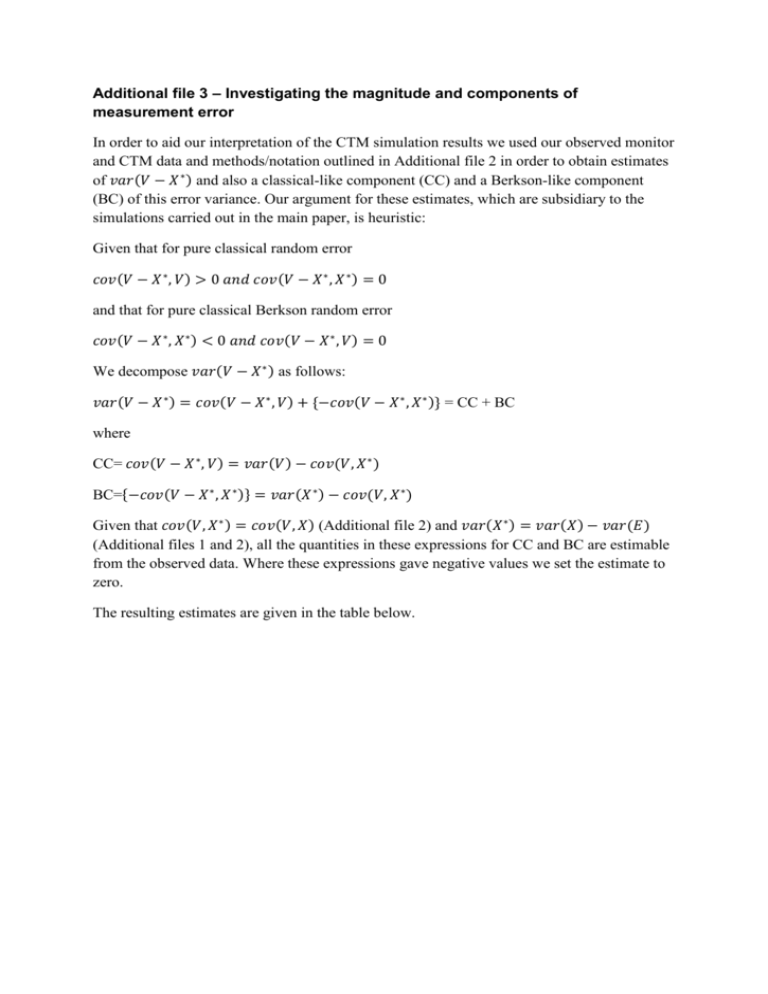
Additional file 3 – Investigating the magnitude and components of
measurement error
In order to aid our interpretation of the CTM simulation results we used our observed monitor
and CTM data and methods/notation outlined in Additional file 2 in order to obtain estimates
of 𝑣𝑎𝑟(𝑉 − 𝑋 ∗ ) and also a classical-like component (CC) and a Berkson-like component
(BC) of this error variance. Our argument for these estimates, which are subsidiary to the
simulations carried out in the main paper, is heuristic:
Given that for pure classical random error
𝑐𝑜𝑣(𝑉 − 𝑋 ∗ , 𝑉) > 0 𝑎𝑛𝑑 𝑐𝑜𝑣(𝑉 − 𝑋 ∗ , 𝑋 ∗ ) = 0
and that for pure classical Berkson random error
𝑐𝑜𝑣(𝑉 − 𝑋 ∗ , 𝑋 ∗ ) < 0 𝑎𝑛𝑑 𝑐𝑜𝑣(𝑉 − 𝑋 ∗ , 𝑉) = 0
We decompose 𝑣𝑎𝑟(𝑉 − 𝑋 ∗ ) as follows:
𝑣𝑎𝑟(𝑉 − 𝑋 ∗ ) = 𝑐𝑜𝑣(𝑉 − 𝑋 ∗ , 𝑉) + {−𝑐𝑜𝑣(𝑉 − 𝑋 ∗ , 𝑋 ∗ )} = CC + BC
where
CC= 𝑐𝑜𝑣(𝑉 − 𝑋 ∗ , 𝑉) = 𝑣𝑎𝑟(𝑉) − 𝑐𝑜𝑣(𝑉, 𝑋 ∗ )
BC={−𝑐𝑜𝑣(𝑉 − 𝑋 ∗ , 𝑋 ∗ )} = 𝑣𝑎𝑟(𝑋 ∗ ) − 𝑐𝑜𝑣(𝑉, 𝑋 ∗ )
Given that 𝑐𝑜𝑣(𝑉, 𝑋 ∗ ) = 𝑐𝑜𝑣(𝑉, 𝑋) (Additional file 2) and 𝑣𝑎𝑟(𝑋 ∗ ) = 𝑣𝑎𝑟(𝑋) − 𝑣𝑎𝑟(𝐸)
(Additional files 1 and 2), all the quantities in these expressions for CC and BC are estimable
from the observed data. Where these expressions gave negative values we set the estimate to
zero.
The resulting estimates are given in the table below.
Variables
Site type
Daily maximum
Rural
running 8-hour mean O3
Urban
loge(Daily maximum
1-hour NO2)
Rural
Urban
Source of
data
Classicallike
standard
deviation
√𝐶𝐶
Berksonlike
standard
deviation
√𝐵𝐶
Total error
standard
deviation
√𝑣𝑎𝑟(𝑉 − 𝑋 ∗ )
25 Monitors
per region
8.429
NA¶
8.429
CTM
9.230
7.926
12.166
25 Monitors
per region
6.772
NA¶
6.772
CTM
9.608
11.718
15.154
25 Monitors
per region
0.437
NA¶
0.437
CTM
0.573
0.0
0.461
25 Monitors
per region
0.256
NA¶
0.256
CTM
0.470
0.0
0.430
¶ For monitor data (1 monitor per 5 km x 5km grid-square) error is all classical by
2
assumption and 𝐶𝐶 = 𝜎𝑒𝑟𝑟
(see Additional file 1)
The error in CTM estimates appears about equally Berkson and classical for ozone,
and wholly classical for loge(NO2).
Negative estimates of BC were obtained for both urban and rural CTM loge(NO2).
These suggest that some of the measurement error in CTM loge(NO2) data may be
non-random.
